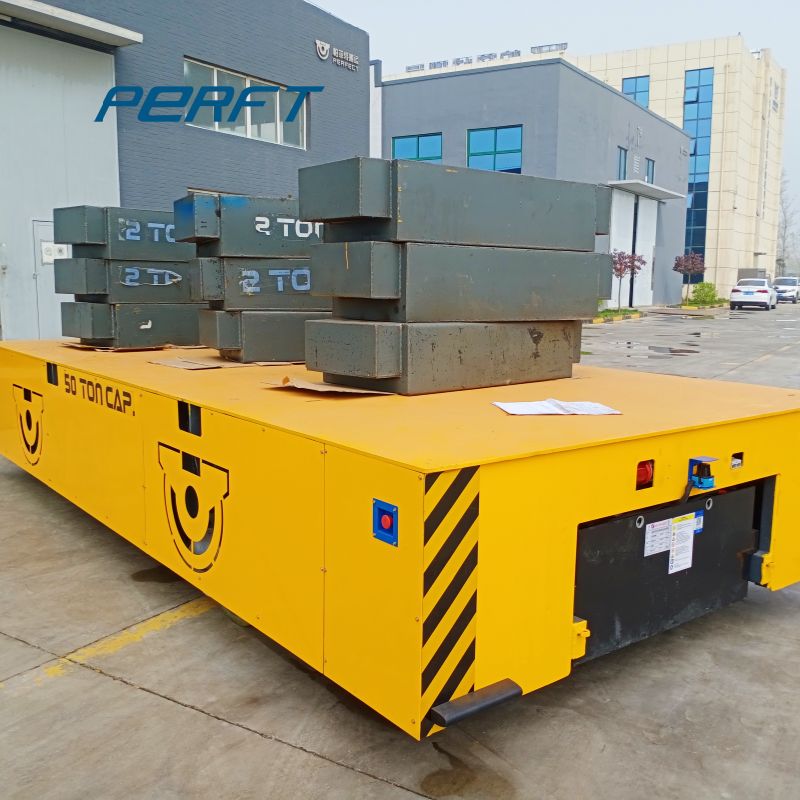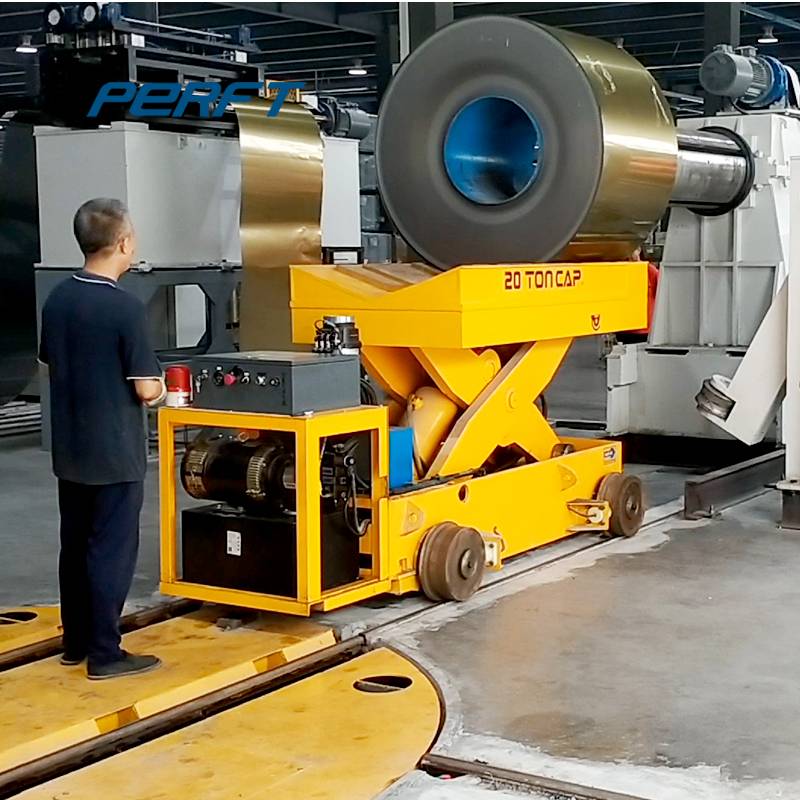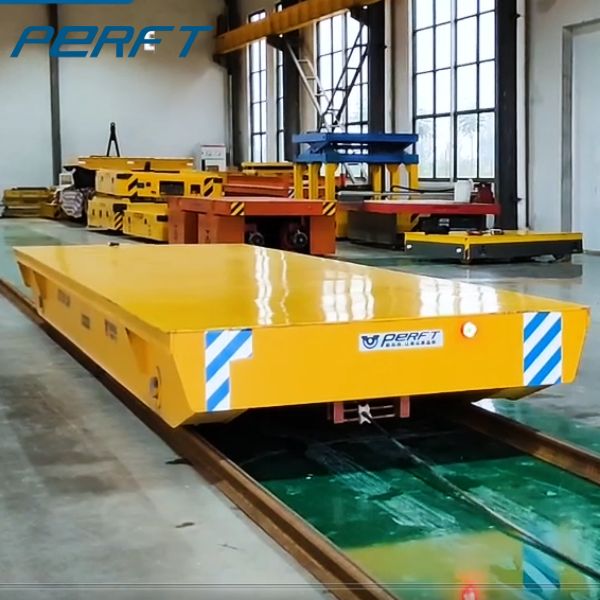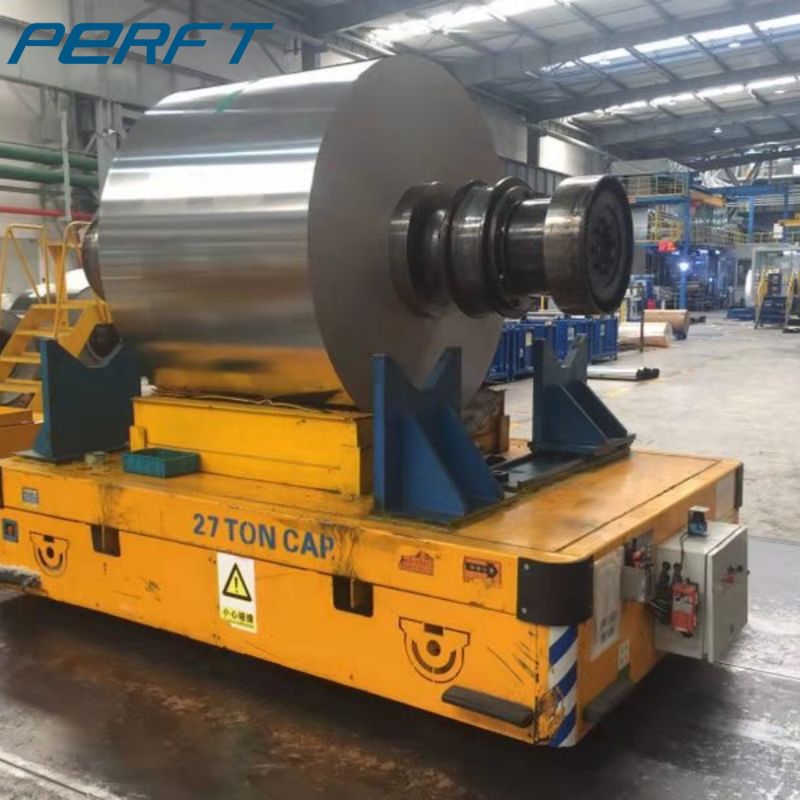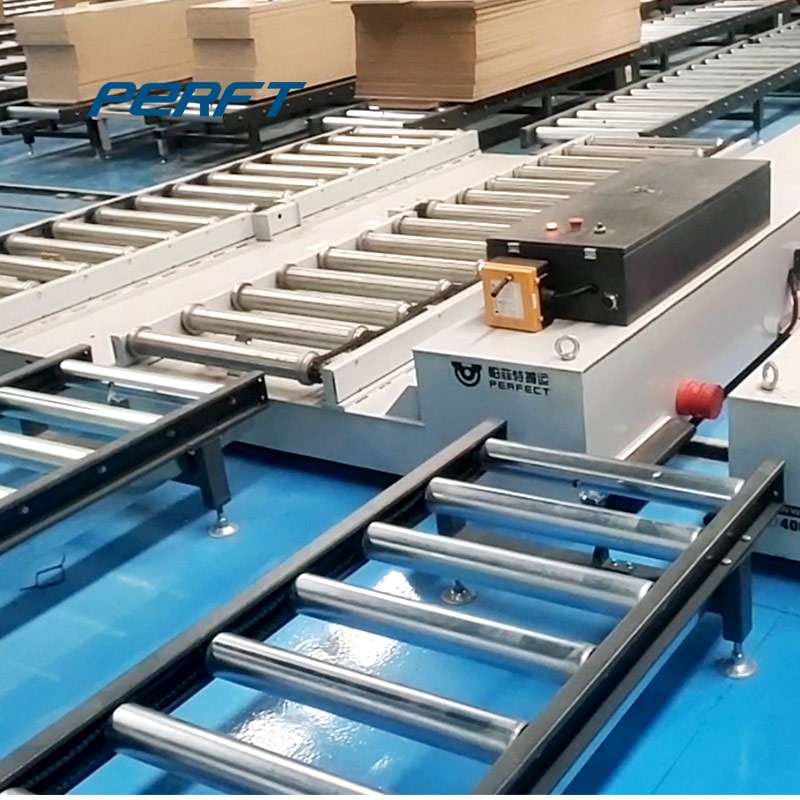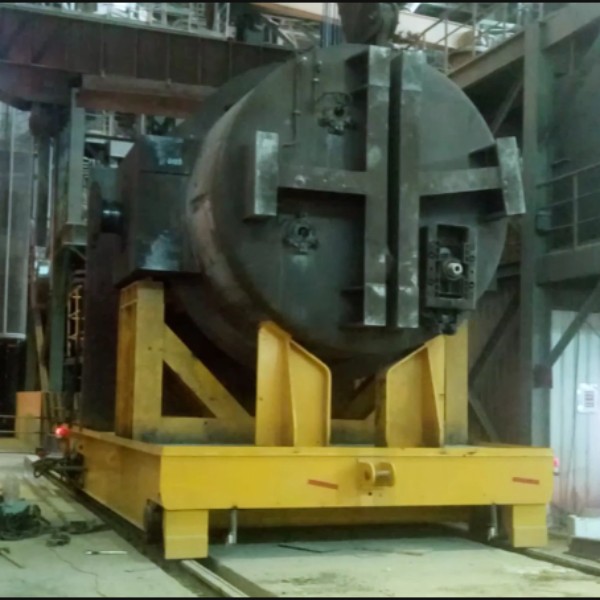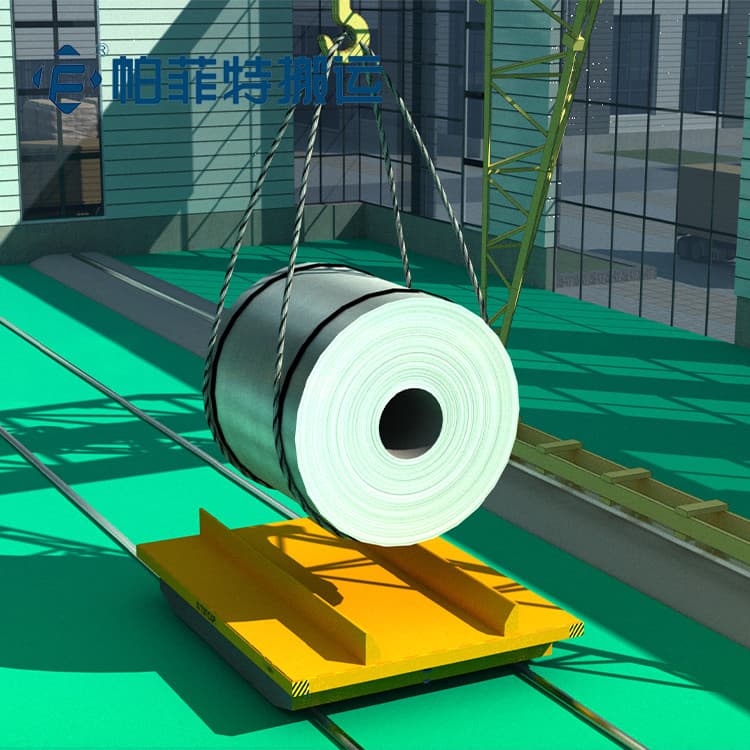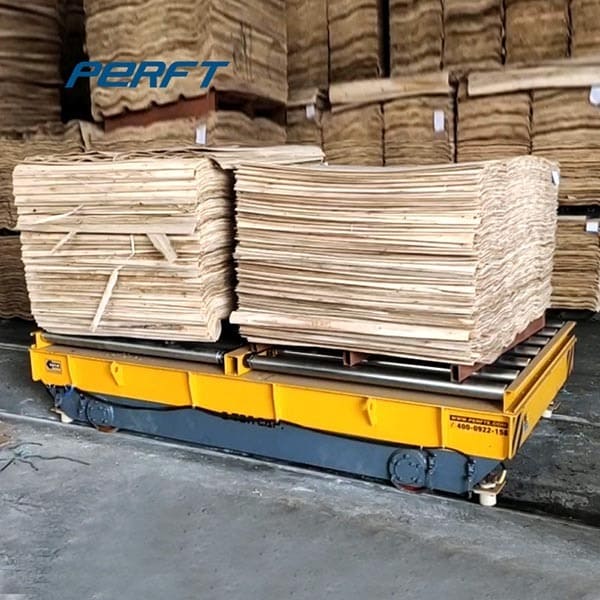Coil Handling Solution with Transfer Carts
In the core of industrial production and logistics transport, coil handling is always a key scenario with high difficulty and high risk. From heavy steel coils in iron and steel metallurgy to precision metal sheets in automotive manufacturing, traditional handling methods are faced with multiple challenges of inefficiency, safety hazards and environmental pressure. With the deepening of Industry 4.0 and intelligent transformation, electric transfer carts, with their revolutionary technological advantages, are becoming an ideal solution to coil handling problems.
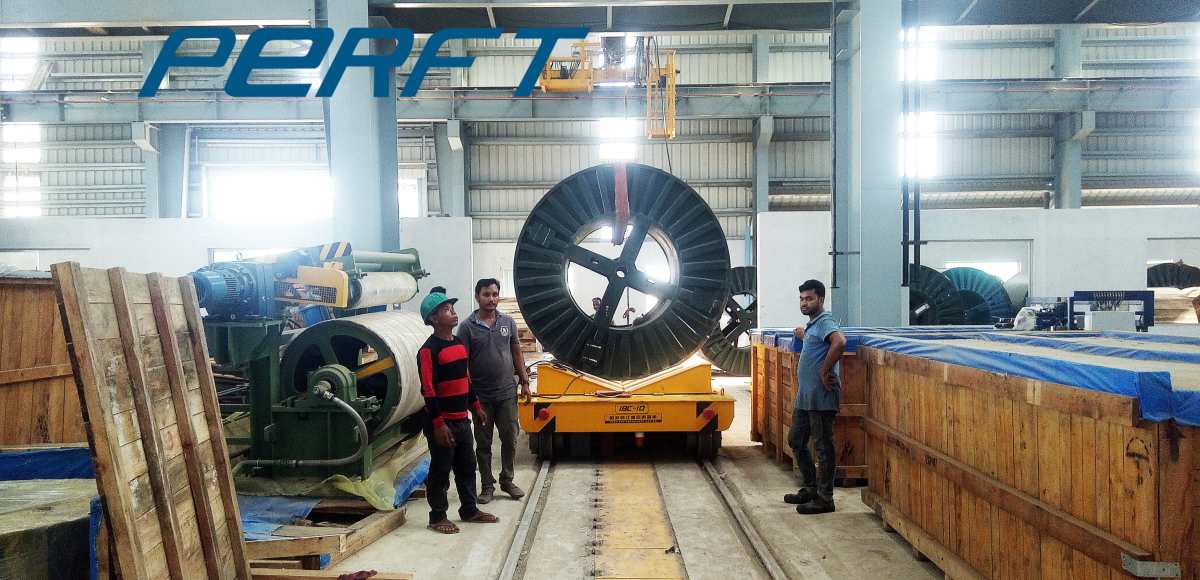
What is Electric Transfer Cart
As a product of the “electrification revolution” in industrial handling, electric transfer cart solves environmental pains with zero emission and low noise, and increases the handling efficiency to a steady speed of 50 metres per minute through intelligent control. After the introduction of electric transfer vehicle in a steel enterprise, the volume of coil transfer in a single shift increased from 80 to 130 volumes, with an increase in efficiency of 62.5%.
Battery powered transfer cart supports 8 hours of continuous operation and is equipped with fast-charging technology, making it suitable for multi-shift production scenarios, while cable powered transfer cart has unlimited range via a drag chain system, making it suitable for high-frequency handling on fixed routes. A shipyard chose cable powered transporter for 24-hour transport on a 150-metre-long hull processing line.
Electric transfer cart on wheels has 360° free steering ability and can turn around flexibly in 1.8 metre narrow aisle; Mecanum wheel realises lateral translation, which is especially suitable for the handling of precision instruments. A new energy vehicle battery factory uses mecanum wheels to complete the docking of battery modules with a precision of 0.5 mm.
Coil Transfer Cart Video
Advantages of Transfer Carts for Coil
- Structural Performance
Adopts a high-strength steel frame, which can withstand 500 tonnes of static load and has passed 1 million fatigue tests without deformation. For high-temperature environments (e.g. 60°C in hot rolling mills), electric transfer cart is equipped with heat dissipation fins and high-temperature resistant bearings; the dust explosion-proof model is IP65 certified, which reduces the failure rate of electric transfer cart by 70% in steel dust environments.
- Efficiency Handling
The fully automated docking function of electric transfer cart reduces the single cycle time by 40% compared to the traditional forklift’s three-stage operation of “pickup-carry-place”. Measured data from a logistics centre shows that the hourly coil throughput increased from 120 to 200 tonnes, saving 3,500 man-hours per year.
- Safety Security
In addition to hardware protection, the software system has a built-in anti-rollover algorithm, which monitors the centre of gravity shift in real time and automatically limits the speed when the tilt angle exceeds 3°; the load sensor is linked to the PLC control system, which immediately locks up the drive system when it is overloaded. After the introduction of an aluminium processing enterprise, there has not been a single handling safety accident in three years.
- Adaptation to Working Conditions
Load customisation: from 5 tonnes of lightweight (for automotive sheet metal) to 500 tonnes of ultra-heavyweight (for metallurgical steel coils).
Functional modules: coil electric transfer cart specific v-brackets to prevent slipping, rotating platforms to allow for 90° directional adjustments, and real-time uploading of material data from the load cell module.
Dimensional adaptation: Narrow models are only 1.2m wide and can traverse lifts; extra-wide models are equipped with a hydraulic suspension system to adapt to bumpy road surfaces.
- Cost-effectiveness
Taking 10-tonne electric transfer cart as an example, battery powered transfer cart consumes an average of 15 kWh of electricity per day, which is less than 1/5 of that of a fuel forklift truck; there are no mechanical parts such as engine and transmission, so the average annual maintenance cost is 60% lower than that of traditional equipment. No engine, gearbox and other mechanical parts, the annual average maintenance cost is 60% lower than traditional equipment.
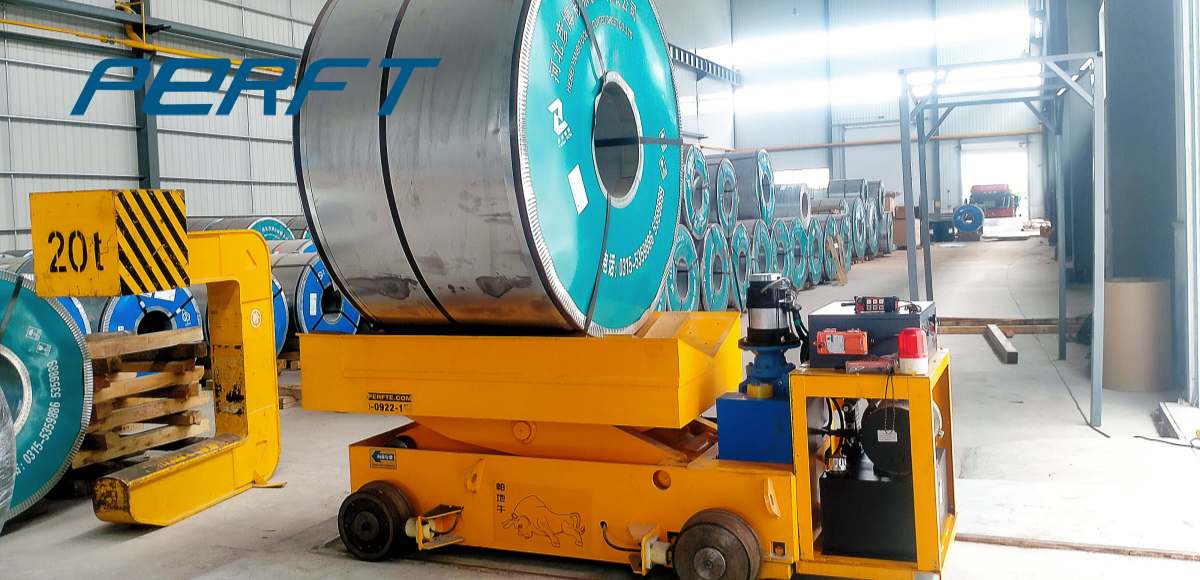
Choosing the Right Transfer Cart
Load Capacity
Allow for safety redundancy to cope with overweight working conditions. Key indicators need to be integrated with the actual weight of the coil and the safety factor. It is recommended to increase the safety load redundancy by 20% on top of the coil weight.
For example, for a 25-tonne coil, a model with a rated load of 30 tonnes should be selected to ensure safe operation of the equipment under extreme working conditions. When transporting 22-tonne hot rolled coils in a steel mill, by choosing a 30-tonne rated transfer vehicle, it not only meets the daily handling requirements, but also can cope with occasional overweight loads and avoid equipment loss due to insufficient load.
Operation Scene
According to the environmental characteristics of the operation scene, choose the appropriate protection level. Such as a dusty environment, need to choose IP65 protection level models, effectively resist steel dust, aluminium powder and other particle invasions, reducing the risk of equipment failure.
An aluminium powder processing workshop used to use ordinary transfer carts, dust into the motor, resulting in frequent shutdowns. After replacing the explosion-proof transfer carts, the equipment failure rate dropped by 70%, significantly improving production continuity.
Space Constraints
Channel width and turning radius are the core considerations for narrow-space operations. Narrow aisles (e.g., 1.5-metre-wide storage racking area) are recommended to choose universal or mecanum wheels omnidirectional models to achieve 360°flexible steering and lateral translation, avoiding inconvenient operations caused by the large turning radius of traditional equipment. A logistics centre introduced narrow-body omnidirectional transfer carts during the renovation of an elevated warehouse, which increased the utilisation rate of the aisle by 30% and the handling efficiency by 40%.
Automation Requirements
Choose the control mode according to the degree of intelligence of the enterprise: basic manual operation is suitable for the initial transition, semi-automated remote control type meets the regular efficiency requirements, while the intelligent factory needs to access the MES system of a fully automated AGV navigation type.
A German automotive production line, through the deployment of a fully automated transfer vehicle, achieves seamless docking with robots, processing equipment, and handling tasks to shorten the response time to 15 seconds, becoming the core hub of the logistics link of the smart factory.
